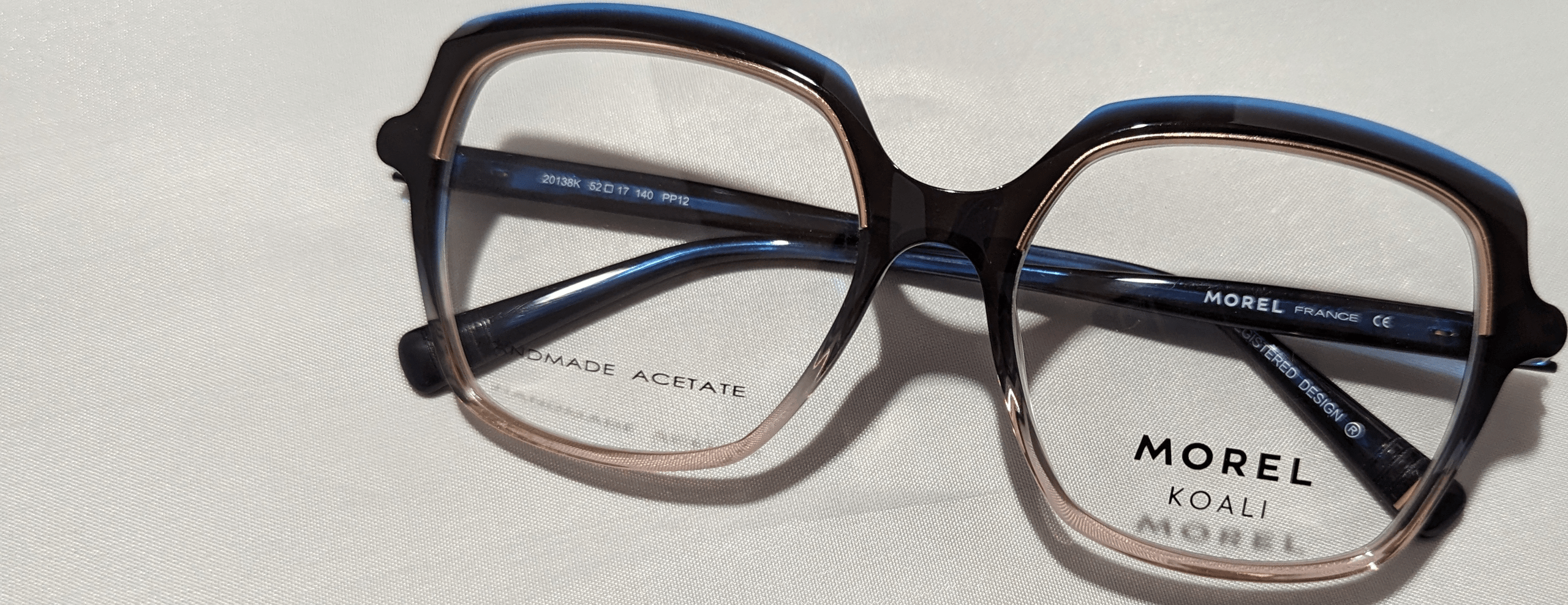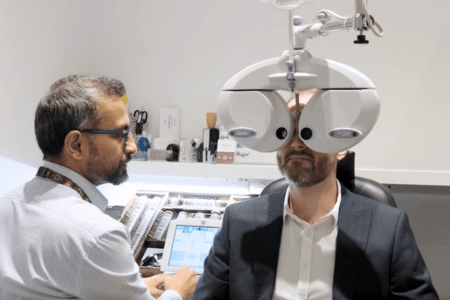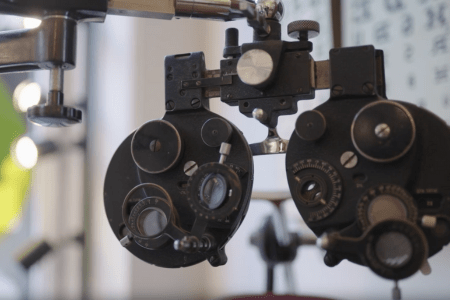
Occupational Lenses
Difference between reading glasses and occupational lenses
Reading glasses are given to those who require help to see smaller prints and close detail. This is because the lens in the eye, like any other muscle of the body, becomes worn and can’t contract and relax as easily with age.
Reading glasses are primarily good for those who use it at a typically set distance, usually 30cm. The prescription for the ‘close up’ (reading) will be given subjectively according to the patients’ needs which will be discussed during the eye examination.
Occupational lenses bridge the gap between reading glasses and progressive lenses. They are great for those who find the reading prescription too strong for their work or hobby but still need a little bit of help.
They are available in a variety of designs. Typically, the reading prescription is set low into the lens and a degression of the prescription towards the pupil centre allows the patient to comfortably look at roughly arm’s length without compromise. It is important to remember that occupational lenses should not be used for driving– although some designs do allow a range of approximately 1m – 6m in distance vision. Occupational lenses are ideal for those who work on a computer and refer to documentation periodically. It is also good for those in an office environment but do not rely on a distance prescription.
Occupational lenses explained
In the modern workplace, clear vision is vital. Occupational spectacle lenses, tailored to specific job needs, have become a valuable solution for many professionals.
Occupational spectacle lenses are custom-made and optimised for precise vision within a designated working distance.
Types of Occupational Spectacle Lenses
Single Vision Lenses: For single-task roles like reading or computer work.
Occupational Multifocal Lenses: Customised multifocals for various work distances with a seamless transition between focal points for versatile tasks.
Benefits of Occupational Spectacle Lenses
Enhanced Productivity: Boosts accuracy and efficiency, reducing errors.
Reduced Eye Strain: Minimises discomfort during extended tasks.
Customised Solutions: Tailored to individual job requirements and comfort.
Occupational spectacle lenses offer tailored vision solutions for professionals, enhancing comfort, productivity, and safety at work. Consult with an eye care professional to find the right fit for your specific job needs and see your work world more clearly and efficiently.
Choosing the Right Lenses: Varifocals vs Occupational Lenses
As our vision changes with age or job demands, we often find ourselves in need of specialised spectacles to maintain optimal visual clarity. Varifocals and occupational lenses are two popular choices for addressing specific vision needs.
Varifocals
Varifocal lenses, also known as progressive lenses, are multifocal lenses designed to correct vision at multiple distances seamlessly. They are particularly beneficial for individuals with presbyopia, a condition that typically occurs with age, causing a decline in near vision.
Key Features of Varifocal Lenses:
Smooth Progression: Varifocals provide a smooth transition between near, intermediate, and distance vision. There are no visible lines on the lenses, making them aesthetically pleasing.
Versatility: They are suitable for a wide range of activities and tasks, from reading to driving.
Presbyopia Correction: Varifocals are ideal for those who need a single pair of glasses to address presbyopia-related vision problems for day-to-day life.
Understanding Occupational Lenses
Occupational lenses, on the other hand, are specialised lenses designed for individuals who have specific job-related tasks requiring clear vision at a particular working distance. These lenses are tailored to meet the unique demands of your profession.
Key Features of Occupational Lenses:
Customised for Work: Occupational lenses are customised to provide optimal vision within a specific working distance, ensuring clear and comfortable sight for job-related tasks.
Multiple Options: They come in various types, including single vision or multifocal lenses, depending on the specific vision needs of your job.
Enhanced Productivity: Occupational lenses can improve work performance by reducing eye strain and enhancing focus for tasks at hand.
Comparing Varifocals and Occupational Lenses
Presbyopia vs Job Demands: Varifocals are primarily for day-to-day life addressing age-related presbyopia, while occupational lenses cater to specific job-related tasks.
Customisation: Occupational lenses can be customised for particular tasks or hobbies, whereas varifocals offer a more general solution for daily activities.
Versatility: Varifocals are versatile for everyday use, while occupational lenses are task-specific and therefore are not suitable for activities outside of work such as driving.
Visual Comfort: Occupational lenses excel at providing precise vision for specific tasks, reducing eye strain and enhancing productivity at work.
In the choice between varifocals and occupational lenses, it ultimately comes down to your individual needs.
Varifocals are an excellent choice for those with presbyopia who require multifocal correction for various daily activities. On the other hand, occupational lenses are ideal for professionals who need tailored vision correction for specific job tasks, ensuring they can perform with maximum precision and comfort.
At Whitby and Co., our opticians specialise helping to determine the best option based on your unique vision requirements and lifestyle.
Regardless of your choice, both varifocals and occupational lenses can significantly improve your quality of life by providing clear and comfortable vision when you need it most.





